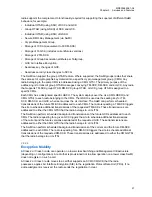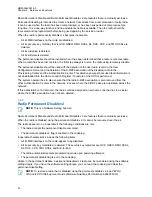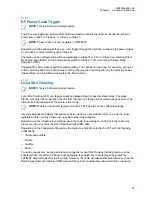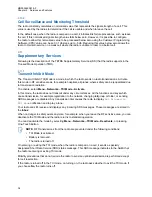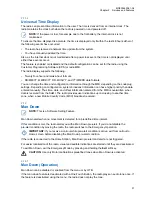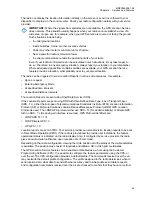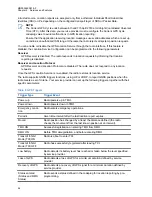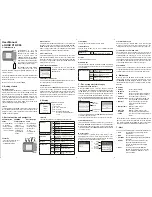
2.8.10
High Assurance Boot
The radio has a facility that ensures that the code and data flashed in the radio is authentic and has not
been altered.
The hardware forces the High Assurance Boot (HAB) module to run at boot time. The module checks
if all software comes from a trusted source. The radio is checking the signature of the code and data
segments present in the radio using a public/private key mechanism.
If the HAB authentication of the flashed software fails, it does not allow the radio software to run.
2.9
TETRA Network Protocol 1
TETRA Network Protocol type 1 (TNP1) is a bridge protocol based on the TETRA layer 3 over the air
protocol. The TNP1 supports all TETRA dispatch functionality.
In the Trunked Mode Operation (TMO), the TNP1 specifies a protocol for use over the PEI, that
allows Terminal Equipment (TE) to have control over the TETRA services: mobility management,
call control, short data service, and supplementary services: send GNSS/GPS reports, software
information, and battery state information. In addition, commands to access the radio configuration
and storage parameters are available.
The system provides point-to-point IP connectivity allowing the following datagram exchanges:
• Radio ←→ External Equipment (TE) (for example PC).
• External Equipment (TE) ←→ Network (through radio).
TNP1 services can use one of two Point-to-Point Protocol (PPP) methods to connect from the terminal
equipment to the radio, local mode, and wide mode. The TNP1 should be used in wide-mode wherever
possible, to allow the parallel operation of TNP1-SDS services over a common PPP link.
If the transmit inhibit is entered, the radio drops the wide mode connection, thus the PEI goes back to
AT mode. Then the TNP1 client detects this change and reinitiates the PPP session in local mode.
The radio disables the TNP1 session while being in the Direct Mode Operation (DMO).
AT commands are used to initiate the PPP service for TNP1 to operate. Once the PPP session is
running all AT commands are blocked. When the PPP session is closed, AT commands are available.
2.9.1
TETRA Network Protocol 1 IP Addressing
Table 3: TETRA Network Protocol 1 (TNP1) IP Addressing
Addressing
Mode
Description
Wide Mode
All TNP1 services are available including packet data transfer towards the SwMI.
The address used is the dynamic address MS IP or configured statically.
Local Mode
All TNP1 services are available except packet data transfer. The addresses used
are the two static addresses TE IP: 10.0.0.101 and MT IP: 10.0.0.100.
Port Ad-
dressing
The radio uses a fixed port address for reception and transmission of TNP1 pack-
ets. The port number is 4024.
MN003465A01-AF
Chapter 2 : Services and Features
31











